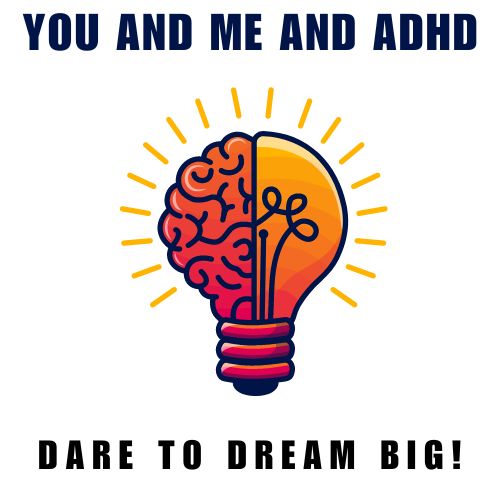
Welcome to the ADD ADHD Definition of Terms and Acronyms. In the following sections, you will find definitions for words you may need definitions for concerning adult ADHD. You will not find terms and acronyms used mainly by the medical or mental health community, as they have their own set of terms and acronyms not used by the public at large.
ADD/ADHD
- A.D.A.: Americans With Disabilities Act. The A.D.A. was enacted into law by the U.S. Congress in 1990, acting upon suggestions by the National Council on Disability in 1986 (Coleman, Cooney-Painter, & Moonga, 2000). The A.D.A. prohibits discrimination against people with disabilities, which includes, but is not limited to physical, mental, and learning disabilities (Coleman et al., 2000).
- ADAAA: Americans with Disabilities Act Amendments Act. The ADAAA was enacted in 2008 and became effective in 2009. The amendment excluded consideration of certain mitigating factors broadened the definition of “regarded as,” and established a new list of major life activities.
- A.D.D.: Attention Deficit Disorder. A.D.D. is a synonym for ADHD (see definition below), even by some trained mental health professionals. A.D.D. is nothing more or less than ADHD without the hyperactive component, which is why A.D.D. is used primarily for adults who may have outgrown the hyperactive stage, but not all adults outgrow this stage.
- ADHD: Attention Deficit Hyperactivity Disorder. ADHD is a chronic medical condition resulting in issues with attention, focus, impulsiveness, and hyperactivity or fidgeting (Bell, 2011). According to the Diagnostic and Statistical Manual of Mental Disorders-V (DSM-V), ADHD is an impairing psychological disorder that predominantly affects children but also adults to a lesser extent (Bell, 2011).
- Comorbid: Comorbid means existing together while being considered separate from another medical condition. An example of a comorbid ADHD component could be dyslexia, which appears in approximately 80% of ADHD children.
ADHD Measures and Tools
- ADHD Coach: A coach who has the training to help ADHD adults better understand specific skills and strategies that help them cope with ADHD in their personal/working lives. An ADHD coach is generally not known by the ADHD person before being coached. Not knowing the ADHD person beforehand allows the coach to remain impartial and somewhat distant when reiterating an important or missed concept.
- ADHD Mentor: Unlike an ADHD Coach, a Mentor is someone the ADHD person knows and respects, who takes the ADHD person under their wing to help shorten the learning curve of learning to live and succeed with ADHD.
- E.F.: Executive Function. Executive functions A.K.A. Supervisory Attention Systems and Cognitive Control. Executive functions is an umbrella term for managing cognitive processes. Cognitive processes include self-regulation of reasoning, problem-solving, working memory, planning and execution, and task flexibility. In layperson’s terms, executive functions are a skill set of mental processes. These processes allow us to prioritize tasks (multi-task), filter distractions (focus our attention), remember instructions, and impulse control (sensing our environment and shifting our behavior in response to it).
- E.F.D.: Executive Function Disorder. E.F.D.s refer to inherent weakness in executive functions caused by ADHD, frontal lobe brain injury, Alzheimer’s disease, or strokes. Indications of E.F.D.s can include but are not limited to:
- Problems with planning or completing projects
- Project time estimate issues
- Fabrication of the truth\
- Memorizing
- Beginning or ending tasks
- Remembering instructions.
- Inappropriate behavior -Unfortunately, A person with E.F.D. can’t tell inappropriate behavior from appropriate behavior. An example could be telling an inappropriate sexually-oriented joke in a mixed-gender setting. As the brain develops (well into adulthood and beyond), correcting some level of E.F.D.s through cognitive and situational awareness training is possible.
- Diagnostic and Statistical Manual of Mental Disorders, 5th Edition (DSM-V): This is a publication of the American Psychiatric Association used to diagnose psychiatric disorders, including ADHD.
- Divergent Thinking. Divergent thinking is an essential measurable component of creativity that identifies a method of problem-solving whereby several possible solutions are presented to find one that works.
- Hyperfocus. Hyperfocus refers to a passionate form of intellectual concentration or visualization that focuses consciousness on a subject, topic, or task to the point when nothing else matters and time for that person seems to stand still. Workers with ADHD who are prone to hyperfocus often miss appointments during this period of hyperfocus as they so intensely focus on the subject that they are unaware of the passage of time (Adamou et al., 2013).
- Learning Disability: A set of neurodevelopmental disorders characterized by a partial or total inability to perform math, read or write.
- Visuospatial. Visuospatial is a component of our cognitive functioning that refers to our capability to process and translate visual evidence to where objects are in space in relation to our position in that space.
ADHD Accomodations
- Accommodations. Accommodations are the intentional adaption of an environment or setting which allows a person with ADHD to overcome a specific challenge. An example could be strategies, software, hardware, or furniture that aid students in becoming more effective at learning within the classroom environment. Accommodations could be:o Concentrated homework load.
- Moving students to eliminate distractions
- Additional time for taking tests
- Wearing noise-canceling headphones when studying or taking tests
- Allowing the student to team up with another student
- Rephrasing instructions that are confusing to the student
- Personalized mentoring or tutoring
- Assistive Technology: These are learning impairment compensations that include, but are not limited to, software/hardware such as spell checkers, audiobooks, or sound-canceling headphones.
ADHD Treatments & General Definitions
- Alpha2 Agonists: These medications stimulate alpha2 adrenergic receptors in parts of the brain, particularly the prefrontal cortex. Clonidine and Guanfacine, Alpha2 Agonists, have effectively treated ADHD. They can be administered orally or transdermally (absorbed through the skin).
- Microsleep. Microsleep is a temporary episode of sleep, lasting from fractions of a second to 30 seconds, during which the person does not respond to external stimuli.
- Stimulant drugs Stimulants are the most commonly prescribed type of medication for ADHD. Examples of stimulant medications are Ritalin and Adderall, the two most often prescribed ADHD meds. Stimulant meds affect the central nervous system, allowing people with ADHD to increase concentration and focus.
- Noradrenergic Medicines
- Non-Stimulant Drugs: A class of non-stimulant noradrenergic agents, which include but are not limited to:
- Atomozetine, is the most commonly prescribed norepinephrine modulator non-stimulant medication for ADHD.
- Viloxazine is another norepinephrine modulator
- Clonidine, an Alpha Antagonist
- Guanfacine , another Alpha Antagonist
- norepinephrine modulators, like stimulant medications, are noradrenergic agents but work differently from stimulant medications.
Conclusion
As more folks read through this list of definitions, feedback will help to add more descriptions over time. If you need additional definitions/descriptions, give me feedback, and I’ll include them in the list.
Dr. Terry L Southern
YouandMeandADHD.com
drterry@youandmeandadhd.com
Adventures With ADHD, LLC

buying cialis in mexico
buying cialis in mexico